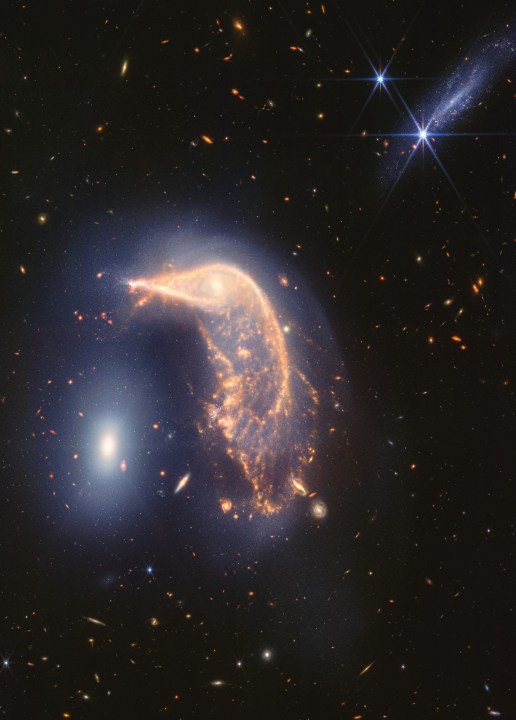
Today, July 12, marks two years since the first images from the James Webb Space Telescope were unveiled. In that time, Webb has discovered the most distant galaxies known, uncovered surprises about the early universe, peered into the atmospheres of distant planets, and produced a plethora of beautiful images of space.
“Since President [Joe] Biden and Vice President [Kamala] Harris unveiled the first image from the James Webb Space Telescope two years ago, Webb has continued to unlock the mysteries of the universe,” said NASA Administrator Bill Nelson in a statement. “With remarkable images from the corners of the cosmos, going back nearly to the beginning of time, Webb’s capabilities are shedding new light on our celestial surroundings and inspiring future generations of scientists, astronomers, and explorers.”
To celebrate the anniversary, Webb scientists have released this new image showing a pair of galaxies in an elaborate cosmic dance.
The pair, technically named Arp 142, have been nicknamed the Penguin and the Egg for their resemblance to a penguin’s head and body. The huge gravitational forces of the galaxies are causing the Penguin, a spiral galaxy, to warp and distort into its current shape. All this pulling and warping creates regions of busy star formation as dust and gas comes together in dense pockets. The Egg, on the other hand, is an elliptical galaxy that is full of older stars that are packed more tightly than those in the Penguin, allowing its shape to remain largely unchanged.
The image combines data from Webb’s near- and mid-infrared instruments, using different wavelengths to see different processes at work. If you look at just the view in the mid-infrared, taken with Webb’s MIRI instrument, you can see that some background galaxies (like PGC 1237172 in the top right) disappear almost completely as this wavelength targets older stars, and the stars here are very young.
“In just two years, Webb has transformed our view of the universe, enabling the kind of world-class science that drove NASA to make this mission a reality,” said Mark Clampin, director of the Astrophysics Division at NASA Headquarters. “Webb is providing insights into long-standing mysteries about the early universe and ushering in a new era of studying distant worlds, while returning images that inspire people around the world and posing exciting new questions to answer. It has never been more possible to explore every facet of the universe.”
Services Marketplace – Listings, Bookings & Reviews
